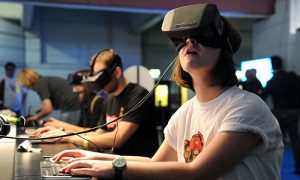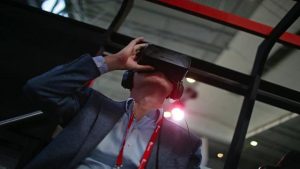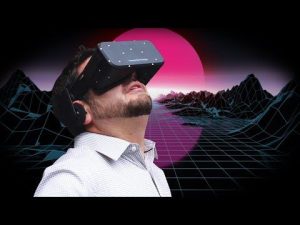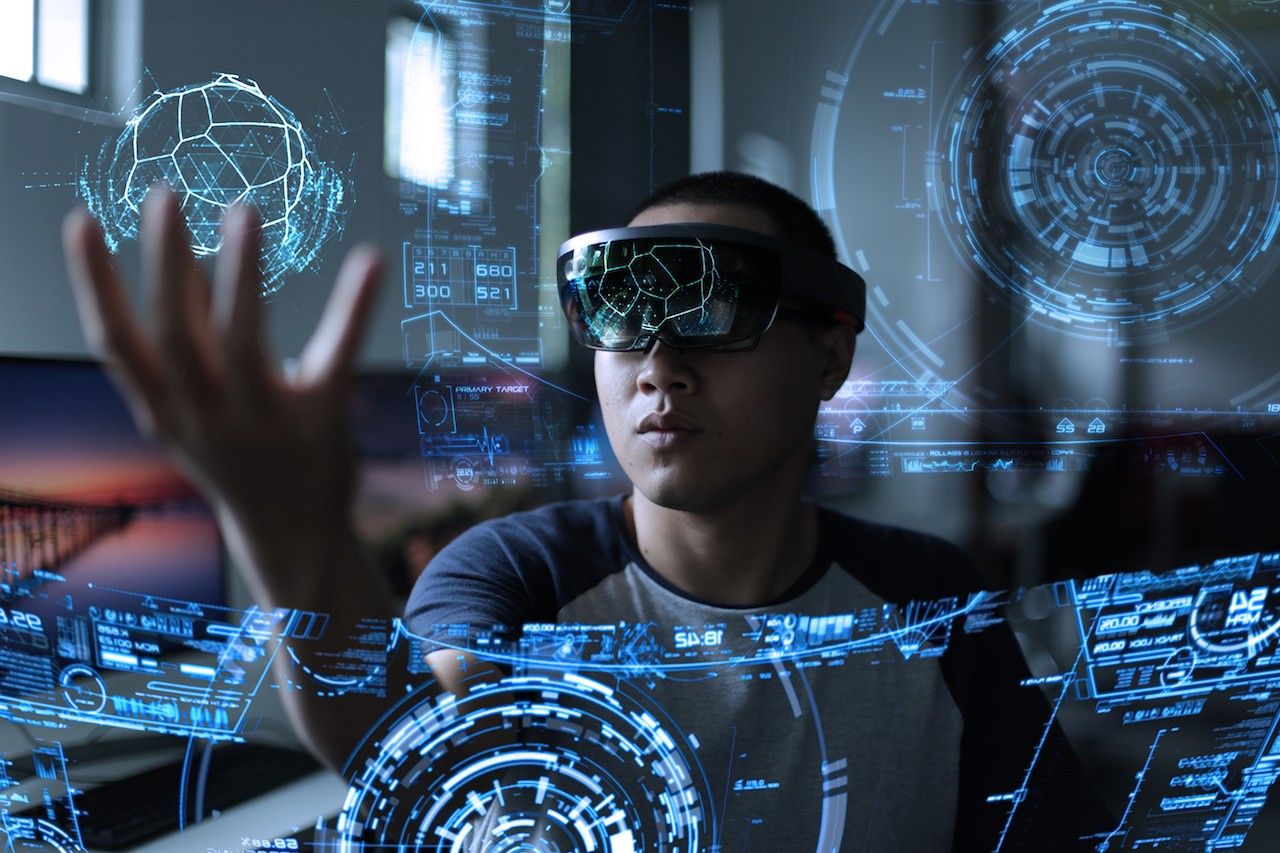Imagine being able to teleport to any location in the world at the click of a button, or experiencing a live concert from the front row without leaving your living room. These are just a few of the incredible possibilities that virtual reality (VR) is bringing to our doorstep. With advancements in technology, VR has become more accessible than ever before, and it’s changing the way we think about the world around us.
In this talk, we’ll explore the rise of virtual reality and the impact it’s having on our daily lives. We’ll delve into the history of VR, its current state, and the potential it holds for the future. We’ll also discuss the various applications of VR, from gaming and entertainment to healthcare and education.
But with great power comes great responsibility, and as we navigate this new reality, we must also consider the ethical and social implications of VR. We’ll examine the challenges and opportunities that come with this emerging technology, from issues of privacy and data security to the potential for immersive and transformative experiences.
So, fasten your seatbelts and join us on a journey to explore the exciting world of virtual reality and discover how we can navigate this new reality with both enthusiasm and caution.
Virtual Reality (VR) is transforming the way we interact with technology and each other, and it’s rapidly becoming a part of our daily lives. From gaming and entertainment to healthcare and education, VR has a wide range of applications, and its potential for innovation and growth is only increasing.
In this article, we’ll explore the history and current state of VR, and examine the ways in which it’s revolutionizing industries and creating new opportunities. We’ll also discuss the challenges that come with this emerging technology, including issues of privacy, security, and ethics.
We’ll take a deep dive into the world of VR, exploring its various applications and the ways in which it’s transforming the way we experience the world. We’ll look at how VR is changing the landscape of education, allowing students to explore and learn in new and exciting ways, and how it’s transforming the healthcare industry, enabling doctors to better diagnose and treat patients.
As we navigate this new reality, we’ll also consider the ethical and social implications of VR. We’ll examine the importance of data security and privacy, and explore the potential for immersive and transformative experiences.
So, whether you’re a tech enthusiast or simply curious about the future of technology, this article is a must-read. Join us as we explore the exciting world of virtual reality and discover how we can navigate this new reality with both enthusiasm and caution.
What is virtual reality (VR) and how is it different from other types of technology?
Virtual reality is an immersive and interactive experience created by computer-generated simulations of three-dimensional environments that can be explored by a user in real time. VR differs from other types of technology in that it creates a sense of presence and immersion, which can give users the feeling of being inside the simulated environment. This is achieved through the use of specialized VR headsets, such as the Oculus Rift or HTC Vive, that track a user’s movements and adjust the view in real-time to create the illusion of being in a different space. This technology has evolved significantly in recent years, with the development of more advanced headsets, haptic feedback devices, and realistic simulations that can create a more convincing sense of presence.
What are the current applications of VR, and how is it changing industries like healthcare and education?

Virtual reality has a wide range of applications, from gaming and entertainment to education and healthcare. In the gaming industry, VR has created new possibilities for immersive and interactive gaming experiences, allowing players to feel like they are inside the game world. In entertainment, VR is being used for virtual concerts and events, providing a new way for people to experience live performances without leaving their homes.
In the healthcare industry, VR is being used to help patients manage pain, anxiety, and other conditions. For example, VR can be used to distract patients during painful procedures, such as changing a wound dressing or getting a shot. VR is also being used to simulate medical procedures, allowing medical professionals to train in a safe and controlled environment before working on real patients.
In education, VR is being used to create new and innovative ways for students to learn. VR can provide students with immersive and interactive simulations, allowing them to explore historical sites or experience scientific phenomena in a way that is not possible with traditional classroom methods.
What are some of the challenges and potential risks associated with VR, such as data security and ethical considerations?
As with any emerging technology, virtual reality presents some potential risks and challenges. One of the primary concerns is data security and privacy. As VR becomes more popular, there is a risk that personal data, such as biometric data or location data, could be compromised. Additionally, there are ethical considerations related to the use of VR, such as the potential for addiction or the risk of creating false memories.
Another challenge associated with VR is the potential for motion sickness or discomfort. Some people experience nausea or dizziness when using VR headsets, which can limit the duration of VR experiences or make them unusable altogether. There are also concerns about the social and psychological impact of VR, particularly in terms of its potential to create a sense of isolation or detachment from reality.
What does the future of VR look like, and what new possibilities might it bring in the years to come?

The future of virtual reality is exciting and full of potential. As the technology continues to evolve, we can expect to see new and innovative applications in a variety of industries. For example, VR could be used to create more immersive and interactive training experiences for professionals in fields like law enforcement, firefighting, or military. Additionally, VR could be used to create more realistic and engaging virtual shopping experiences or to provide virtual travel experiences for people who are unable to physically travel.
How accessible is VR technology, and what are some of the barriers to adoption?
While VR technology has become more accessible in recent years, it is still relatively expensive and requires specialized hardware to operate. Additionally, not all VR experiences are created equal, and some require more powerful hardware than others. This can create a barrier to adoption for people who are not able or willing to invest in the necessary hardware.
What are some of the key players in the VR industry, and what are their contributions to the development of the technology?
Some of the key players in the VR industry include Facebook (which owns Oculus VR), HTC, Sony, and Google. These companies have been instrumental in the development of VR hardware and software, and have contributed to the growth and evolution of the industry as a whole.
How is VR being used in the world of art and creativity, and what new possibilities does it offer for artists and designers?

VR is being used in the world of art and creativity in a variety of ways, from creating immersive installations to providing new tools for artists and designers. For example, VR can be used to create virtual galleries or museums, allowing people to experience art in a new and immersive way. Additionally, VR can be used to create 3D models and visualizations, providing new tools for designers in fields like architecture and product design.
How is VR being used in the field of sports and athletics, and what benefits does it provide for athletes and fans?
VR is being used in the field of sports and athletics in a variety of ways, from training simulations to virtual fan experiences. For athletes, VR can provide a safe and controlled environment for training and practice, allowing them to hone their skills in a more realistic and immersive setting. For fans, VR can provide a new way to experience sporting events, allowing them to feel like they are in the stadium or on the field.
Conclusion:
Virtual reality is an exciting and rapidly evolving technology with a wide range of potential applications. From healthcare and education to entertainment and sports, VR is changing the way we experience the world around us. While there are certainly challenges and risks associated with VR, such as data security and ethical considerations, the benefits and possibilities of the technology are vast and exciting. As VR continues to evolve and become more accessible, we can expect to see even more innovative applications and possibilities in the years to come.

